“Burning Man is the perfect melting pot of creativity and inspiration,” observes Pablo González Vargas of Mayan Warrior, the iconic rolling sound system that is being transformed into an all-electric mutant vehicle over the next two years (yep, even those famed lasers, lights, and speakers). “The things I learn at the Burn from experience, being conscious of the waste we generate and how much fuel we spend — it’s made me change my life.”
This ambitious conversion project is just one of the many threads in a larger sustainability effort that is having a powerful impact. Burning Man events around the world, including Black Rock City, are real-life laboratories where new tech and wild ideas get thrown into the desert furnace. Here, innovation is built, broken, and regenerated, becoming playa-tough and perfected. From the Super Bowl and music festivals, disaster recovery to private homes and municipalities, the ever-advancing power configurations on playa and at 85 official Regional Events around the world are inspiring regenerative solutions that support a more sustainable future.
Burner-conceived Energy Technologies Are Influencing Large-scale Commercial Events
Renewable energy technologies developed in Black Rock City have made their way to the Super Bowl.
Black Rock City Operations and Regeneration teams are working in close collaboration with technology providers to power the city’s electrical grid, as a path to reducing emissions from the city’s operations. By bringing together decades of hard-won experience in the desert, with state-of-the-art gear from companies such as Sunbelt Rentals and Viridi Battery technology, some intriguing real-world results have come about. Sunbelt was also the power provider for the 2024 Super Bowl, where they introduced sustainable technology developed in BRC to power the vehicle screening area during the event in Las Vegas.
“We were able to successfully deploy Viridi batteries at the Superbowl, as well as showcase the Dragon Wings solar product designed by Burners…,” said Gary Meador, a senior director at Sunbelt who has been collaborating with Black Rock City Operations since 2023. “We ran that whole area for a month without turning a generator on hardly at all. Neither of these would’ve been possible without our collaboration with Burning Man Project.”
Developed in BRC, The Dragon Wings renewable microgrid system powered the 2023 Super Bowl’s vendor operations and the construction of the halftime stage. The brainchild of Dr. Ryan Wartena, Dragon Wings answered a need for a mobile energy system to power his BRC theme camp. Wartena shared, “Dragon Wings evolved right from Burning Man and Black Rock Labs’ extensive experience with solar power at Snow Koan Solar in Black Rock City.”
BRC’s role as a crucible for sustainable innovation continues to resonate far beyond the playa. This desert laboratory not only pioneers technologies reducing its own environmental impact, but also helps shape the future of sustainable event production by exporting these solutions globally.
Going Solar, by Profiles in Dust, features projects that are contributing to a net zero Black Rock City. Watch it here:
Burning Man Is a Testing Ground for Regenerative Technology and Practices That Are Changing the World
Picture this: Beneath the dust-swirled steady thud of revelry in Black Rock City lies a less-visible yet equally vital heartbeat—a complex power grid, woven into the desert surface. This isn’t just a couple of extension cords and a prayer; it’s a full-blown maze of batteries, solar panels, and generators powering the essential infrastructure of a temporary 80,000-person city, day and night. This complex power configuration is an ever-advancing network where renewable energy, alternative fuels, and cutting-edge battery technology are displacing fossil fuels and traditional generators, rapidly paving the way for a cleaner BRC and beyond.
“George Reed: Invisible MOOP and the Net-Zero” on Burning Man LIVE podcast—Stuart Mangrum speaks with George B. Reed III, Director of Regeneration, about how BRC crews and participants are embracing clean energy.
Now, Net Zero Black Rock City plans to convert all staff and participant operations into a net zero carbon model. It’s already resulted in a 25% reduction of power-related fossil fuel use in BRC thanks to a new grid design that uses solar, batteries, and renewable fuels. We’re just getting started—in BRC 2024 we plan to have batteries on 100% of our grid, fast-tracking the shift away from fossil fuels on the city’s operations. “If things go according to plan for this event, we will have reduced the carbon impact of producing power for the infrastructure of BRC by more than 65% in just three years’ time,” says Chris Neary, the Associate Director of the DPW known as ChAos. Burners have always led the charge in innovating cultural, technological and logistical innovations—we’re now seeing those innovations make their way out into the world to solve big problems well beyond Black Rock City.
Commercial Events Around the World Are Inspired by Sustainability Practices of Burning Man Regional Events
Burning Man’s ambitious sustainability goals and the Net Zero BRC initiative have inspired and guided Regional Events to develop their own sustainability roadmaps to address their unique environmental needs and challenges. Founding member Ancka Stefan of Kiez Burn in Germany’s Berlin area shared, “In integrating the principles of Leaving No Trace and Communal Effort from Burning Man, we’ve been able to foster a culture of environmental consciousness and collective responsibility at Kiez Burn. The Sustainability Roadmap and Net Zero BRC have served as guiding lights for us in developing our own sustainable practices.”
Kiwiburn in New Zealand (incidentally the first Regional Burning Man Event outside North America) was the first Regional Event to prototype Burner Leadership for Sustainable Theme Camps (BLAST), a sustainability rating system that assesses theme camps.
Kiwiburn’s sustainability initiatives have influenced larger commercial events, particularly in waste management strategies such as food and plastic recycling. “Green Kiwi-Burners work with other organizations, and there is a ripple effect—our sustainability practices are absorbed into other events,” noted Kiwiburn’s chairperson, Andy Justice. “Kiwiburn is quite often used as a sort of a guideline for other commercial events in New Zealand to look at how to do things.”
KiwiBurn has long planted trees to offset carbon emissions generated by their event; with the implementation of BLAST-inspired Green Kiwi, the initiative is now expanding beyond their own community to other parts of New Zealand. In 2022, KiwiBurn launched the Green Kiwi initiative to encourage theme camps and the wider KiwiBurn community to adopt sustainable event practices such as carpooling, compostable toilets, a compost program, and renewable energy sources. As a result, the event has seen a significant shift towards solar power, with many camps investing in solar panels and battery storage.
Black Rock City Participants Iterate on Renewable Practices That Extend Beyond the Dust
Burning Man has always been a testbed for innovative sustainable technologies and practices — born in our own backyards, refined on the playa, and extended to the wider world. Through their camps and art projects, participants in BRC and Regional events are actively testing regenerative technologies that will help meet the goal of a net zero BRC, and are already being applied elsewhere in the world.
Black Rock City has 1,188 placed camps, and many more unplaced camps, each contributing uniquely. According to Bryant Tan, Associate Director of City Planning in Black Rock City, 52% of placed camps in 2024 are working towards Burning Man’s 2030 Environmental Sustainability Roadmap, and 61% are using alternative power (mostly solar).
We’re also seeing camps expand their sustainability efforts beyond BRC. Marcus De Paula built a rapid-deployment solar power infrastructure for a camp that has served 35,000 bao buns in its eight years on playa. “I knew nothing about solar last year. I built the whole system in two weeks and learned everything from YouTube.” Bao Chicka Wow Wow’s system in 2023 was 20 panels producing 10,000 watts of power—since they learned that setting up their solar array takes the same amount of time as setting up their normal shade structure, they’re going to quadruple its size in 2024.
After this year on playa, De Paula has plans to market his design to other rapid deployment situations, disaster relief in particular. “Disasters can disrupt roads and infrastructure, creating challenges similar to those faced at Burning Man of getting fuel out to locations that require generators. Running a generator is actually really challenging, and when you have solar, you drop the equipment and then you don’t have to worry about consistently servicing it. They’re pretty robust at this point.”
The Temple of Time is a two-story interactive art car built by William Venable that will be fully electrified at BRC in 2024. It has a 3,000-watt inverter and 10,000 watts of storage capacity on a 48-volt system. Back at camp, it plugs into a shade structure that doubles as a solar power generator, effectively creating a self-sufficient operational base. The whole setup will produce 15,000 watts of power in Black Rock City, more than they need—with the extra energy produced, Venable has arranged to supply excess power to support the Black Rock Observatory’s infrastructure.
Once back in Utah, Venable plans to repurpose this technology to power his home. “There’s nothing quite like a 24 hour free power grid powered by the sun,” Venable shared. “So I think that’s the way to do it, is to start blending our personal lives, our Burning Man lives, our work lives, and we start blending everything together so that they almost become indistinguishable from one to another as far as our energy sources and our energy uses go.”
Join Us and Inspire a Cleaner Future
Burning Man Project is the nonprofit in service to this global cultural movement, in all its beautiful and brilliant manifestations. Your tax-deductible donation will support our year-round work stimulating innovation and creativity, in Black Rock City and beyond.
Mitigating climate change is everyone’s responsibility. Burners in Black Rock City and at Burning Man events around the world have been creating and implementing low carbon practices and technologies for decades, and we’re no strangers to tackling difficult problems. Burning Man is not separate from the world. We are part of it and have always led the charge in innovating cultural, technological and logistical innovations that make their way out into the world to solve big problems. Our work in this realm is no different, and the stakes have never been higher. Join us today!
Cover image of a Unicorn solar array powering the Man, 2024 (Photo by Rand Larson)


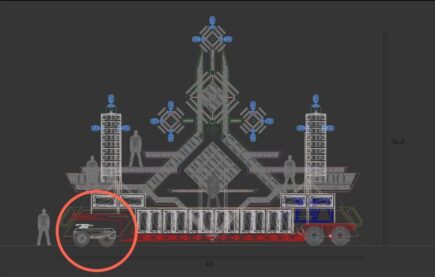
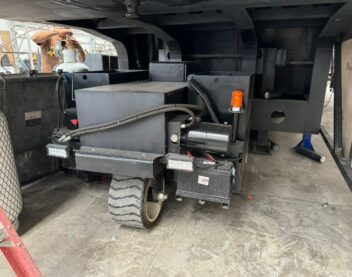
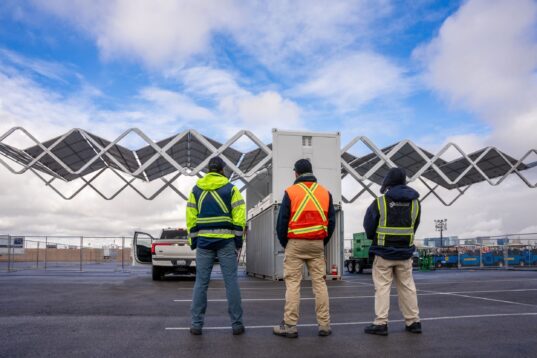



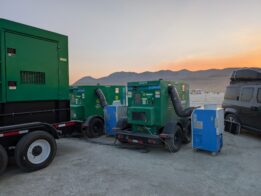

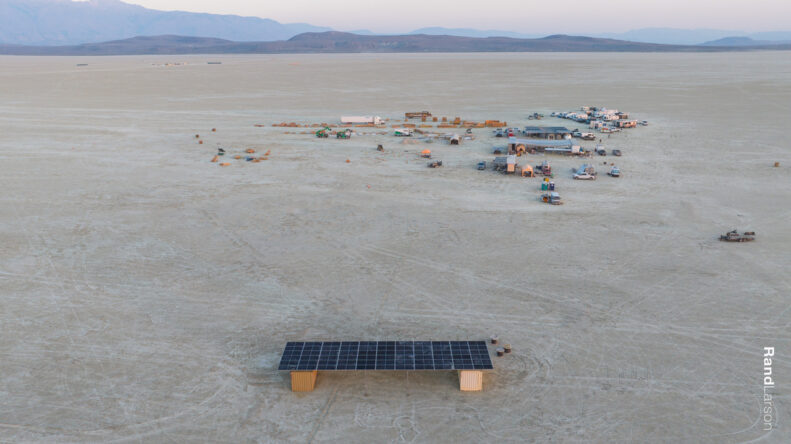
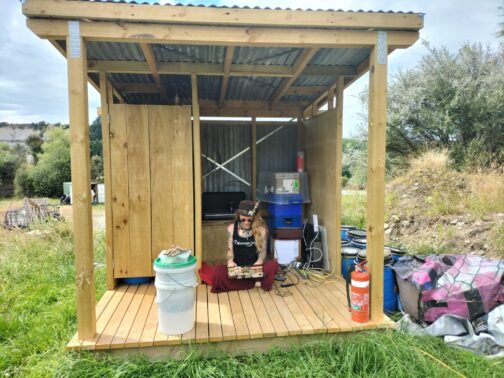
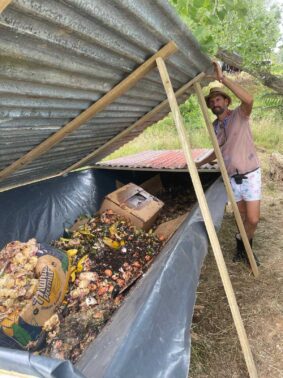

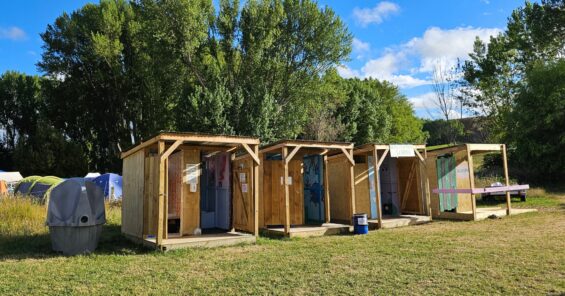

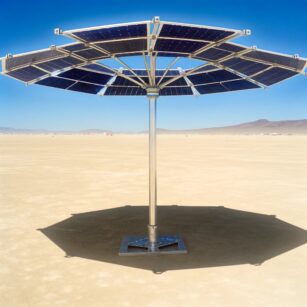
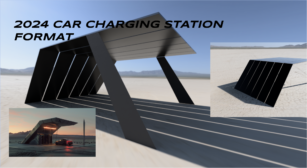
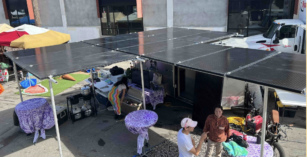
Love this journal post so much! I had the opportunity to speak about initiatives like these in Berlin last Fall at the Future of Festivals Conference and I can add that festivals throughout the world are also looking to us for sustainability practices they can try. I see our Leaving No Trace principle and sustainability work inspiring large events to think about what it will take for them to also get to carbon negative. Rapid prototyping of environmental solutions is critical for the planet. Go community go! Run with these ideas and take them to the next level!
Report comment
Really love the concept of this article but am a bit surprised at how much commidification and branding is mentioned in the article. I get that sunbelt is helping and doing good things, and this reads like a press release from the brand, with burning man approving it.
While an important OSS vendor I’m sure, it feels antithetical to our principles to cobrand this article so much with them.
Report comment
Great to read! And to watch the video inserts too. Thanks Leslie.
Report comment
Comments are closed.